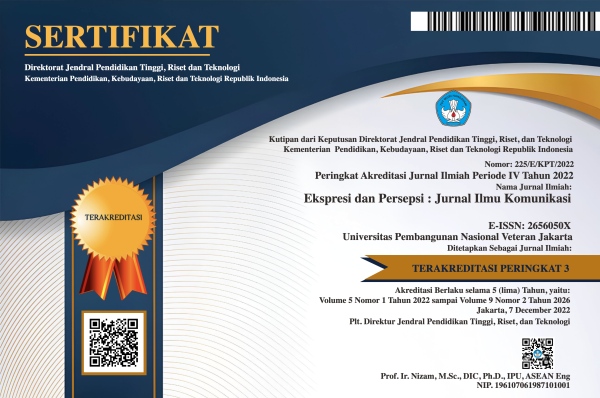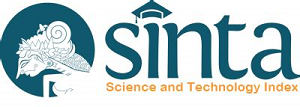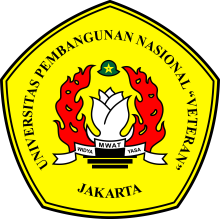The IMC Model in Vocational Education Business at Polytechnic Caltex Riau to Strengthen Brand Positioning
Keywords:
brand positioning, IMC, new student enrollment, vocationalAbstract
Brand positioning is an effort to position the perception of a brand for consumers. The strength of brand positioning has the power to drive consumers to provide more value than competitors, which can be supported by the Integrated Marketing Communication (IMC) model. This research is based on efforts to improve and strengthen the brand positioning held by Polytechnic Caltex Riau. This is supported by the achievement of student admissions to Polytechnic Caltex Riau, which has shown a positive trend over the past five years amidst intense competition among vocational higher education institutions. This study explores how the IMC implemented by Polytechnic Caltex Riau can help strengthen brand positioning. The research method used in this study is qualitative, with data collection conducted directly and indirectly, and the sample selection technique is purposive sampling. The results of the research analysis found that the Integrated Marketing Communication of Polytechnic Caltex Riau is divided into two categories: the high category (Sales Promotion, Advertising, Sponsorship, Exhibitions, Merchandising, Social media, and Website) and the low category (Direct Marketing, Public Relations, Packaging, and Selling and Sales Management). The implementation process of marketing communication activities at Polytechnic Caltex Riau has seven layers of marketing tools, which the researcher refers to as the wafer layer marketing communication model. It is hoped that the IMC model used by Polytechnic Caltex Riau, which has seven stages in marketing communication activities including the Report, student admission announcement, Socialization, Follow Up, Engagement Program, Workshop, and Goes to School Program, can be used by other campuses to strengthen the brand positioning of vocational higher education institutions.
References
Ardiansyah, D., Romadhan, M. I., & Pradana, B. C. S. A. (2023). Strategi Integrated Marketing Communication SMA Al-Islam Krian dalam Penerimaan Peserta Didik Baru Tahun 2023-2024. SEMAKOM: Seminar Nasional Mahasiswa Komunikasi, 1(1), 223–228.
Ariwibowo, M. A. (2019). Strategi Pemasaran Lembaga Pendidikan Tinggi Swasta. Scientific Journal Of Reflection: Economic, Accounting, Management and Business, 2(2), 181–190. https://doi.org/10.5281/zenodo.2628082
Biemans, W. (2023). The impact of digital tools on sales-marketing interactions and perceptions. Industrial Marketing Management, 115(October), 395–407. https://doi.org/10.1016/j.indmarman.2023.10.015
Djasmin, S. (2011). Intisari Pemasaran dan Unsur-Unsur Pemasaran. CV Agung Ilmu.
Du, B., Yuan, J., Shu, W., & Shen, Y. (2023). Optimal product customization and cooperative advertising strategies in supply chain with social influence. Procedia Computer Science, 221, 992–999. https://doi.org/10.1016/j.procs.2023.08.079
Fardan, M. Z., & Yozani, R. E. (2023). Strategi Komunikasi Pemasaran UMKM Himpunan Pemuda Reformasi (HPR) dalam Memasarkan Gula Aren di Kecamatan Rambah Kabupaten Rokan Hulu. Jurnal Ilmu Komunikasi Dan Bisnis, 9(1), 13–28. https://doi.org/10.36914/jikb.v9i1.986
Hanifah, S., & Yanuar, F. (2020). Penggunaan Transit Advertising dalam meningkatkan Minat Beli. The Source: Jurnal Ilmu Komunikasi, 2(1), 81–92. http://jurnal.usahid.ac.id/index.php/ilmu_komunikasi/article/view/303
Hermawan, A. (2015). Metode Penelitian Bisnis. PT. Grasindo.
Kotler, P., & Amstrong, G. (2008). Prinsip-Prinsip Pemasaran. Erlangga.
Lu, X., & Lange, E. (2024). Examining the effectiveness of urban planning exhibitions in planning communication: A contextual model of learning. Cities, 147(159). https://doi.org/10.1016/j.cities.2024.104830
Marc Lim, W. (2023). Transformative marketing in the new normal: A novel practice-scholarly integrative review of business-to-business marketing mix challenges, opportunities, and solutions. Journal of Business Research, 160(November 2021), 113638. https://doi.org/10.1016/j.jbusres.2022.113638
Miles, M. B., Haberman, A. M., & Saldana, J. (2014). Qualitative Data Analysis, A Methods Sourcebook. SAGE Publications Inc.
Nursakti, A. D., & Zulfiningrum, R. (2023). Strategi Public Relation Dalam Membangun Brand Image Pada Hotel Aruss Semarang. https://doi.org/10.33822/jep.v6i2.5848
Qanita, N. M. (2023). Strategi Penyebaran Informasi oleh Diskominfo Jabar Melalui Aplikasi “Si Votun” Kepada Penyandang Disabilitas Tunanetra. Ekspresi Dan Persepsi : Jurnal Ilmu Komunikasi, 6(1), 52–61. https://doi.org/10.33822/jep.v6i1.4561
Ratnawuri, T., Pritandhari, M., & Damayanti, E. F. (2020). Analisis Strategi Integrated Marketing Communication Terhadap Minat Mahasiswa Pendidikan Ekonomi Universitas Muhammadiyah Metro (Vol. 8, Issue 2).
Rehman, S. ul, Gulzar, R., & Aslam, W. (2022). Developing the Integrated Marketing Communication (IMC) through Social Media (SM): The Modern Marketing Communication Approach. SAGE Open, 12(2). https://doi.org/10.1177/21582440221099936
Sahem, M. S. (2023). A Study on the Efficiency of Marketing Communications in Business-to-business Markets. International Journal For Multidisciplinary Research, 5(6), 0–7. https://doi.org/10.36948/ijfmr.2023.v05i06.10785
Salonen, A., Mero, J., Munnukka, J., Zimmer, M., & Karjaluoto, H. (2024). Digital content marketing on social media along the B2B customer journey: The effect of timely content delivery on customer engagement. Industrial Marketing Management, 118(May 2023), 12–26. https://doi.org/10.1016/j.indmarman.2024.02.002
Sasciki, B. (2022). Implementasi Integrated Marketing Communication Untuk Meraih Brand Awarness dan Citra Publik Universitas Muhammadiyah Surakarta (UMS). Universitas Muhammadiyah Surakarta.
Sitorus, O. F., & Utami, N. (2017). Strategi Promosi Pemasaran. Uhamka Pers.
Smith, P., & Zook, Z. (2011). Marketing Communications Integrating Offline and Online with Social Media. Btirish Library Cataloguing-in-Publication data.
Sugiyono. (2020). Metode Penelitian Kuantitatif, Kualitatif dan R&D (Edisi Kedua). CV Alfabeta.
Sukarna. (2011). Dasar-Dasar Manajemen. CV Mandar Maju.
Syed, T. A., Mehmood, F., & Qaiser, T. (2023). Brand–SMI collaboration in influencer marketing campaigns: A transaction cost economics perspective. Technological Forecasting and Social Change, 192(April), 122580. https://doi.org/10.1016/j.techfore.2023.122580
Tjiptono, F. (2008). Strategi Pemasaran. Percetakan Andi.
van der Bend, D. L. M., Gijsman, N., Bucher, T., Shrewsbury, V. A., van Trijp, H., & van Kleef, E. (2023). Can I @handle it? The effects of sponsorship disclosure in TikTok influencer marketing videos with different product integration levels on adolescents’ persuasion knowledge and brand outcomes. Computers in Human Behavior, 144(November 2022), 107723. https://doi.org/10.1016/j.chb.2023.107723
Watono, A. A., & Watono, M. C. (2011). Integrated Marketing Comminication that Sells. PT Gramedia.
Yulianto, E. (2021). Komunikasi Pemasaran Terintegrasi. Deepublish.
Downloads
Published
Issue
Section
License
Copyright (c) 2024 Edi Tri Prayitno

This work is licensed under a Creative Commons Attribution-NonCommercial 4.0 International License.














